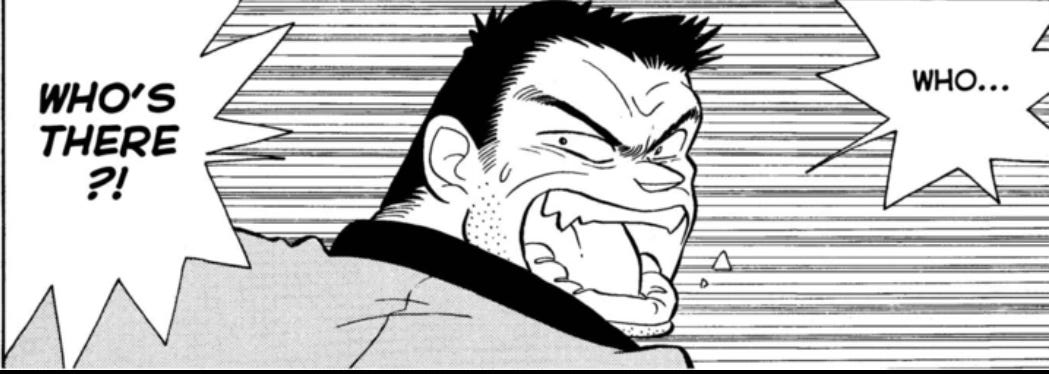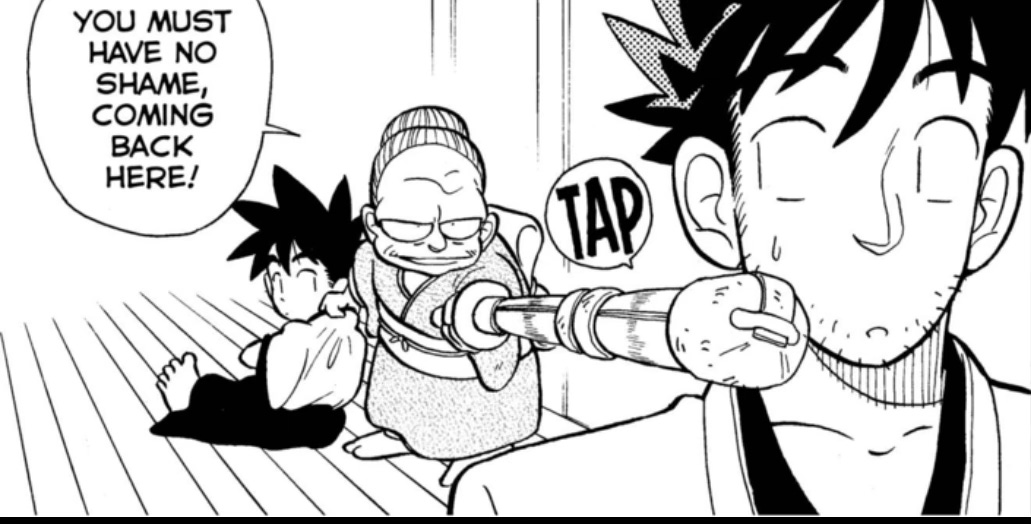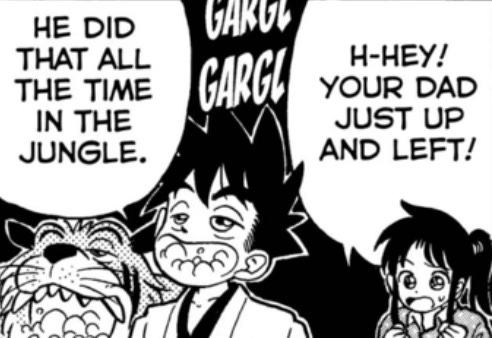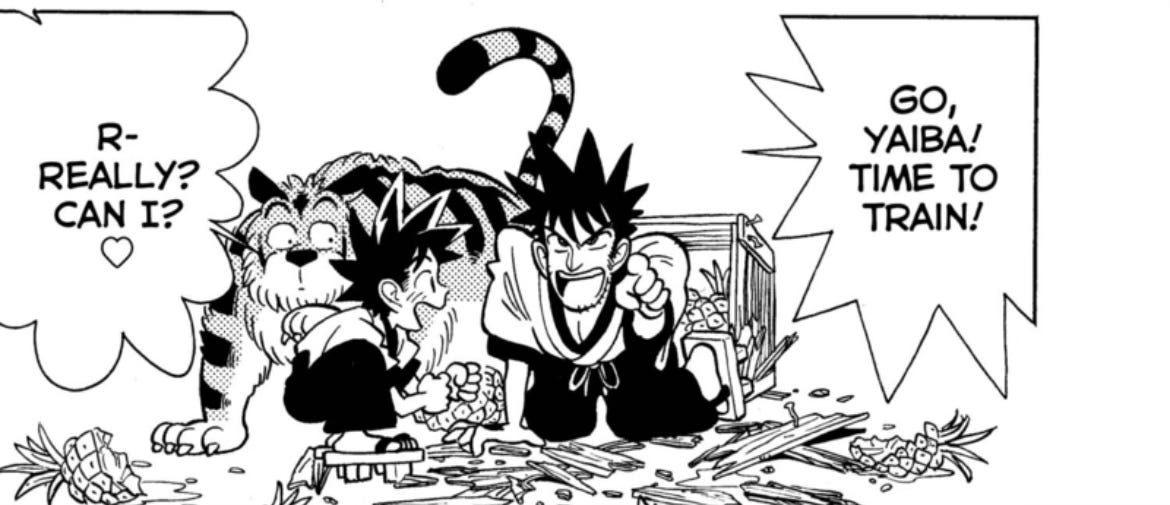Preface!
I don’t remember how I heard about Yaiba: Samurai Legend, but I remember when I did, I thought, “eh.” Don’t get me wrong, I loved Brenden Fraser in Blast from the Past, I will always have fond memories of that story, but I am a bit tired of “character excluded from society has to adapt to the modern world” narratives. Unless they can add a fun twist or nugget of intrigue.
Yaiba: Samurai Legend does that. Not just that, but it finally gave me a parallel to connect with The Batman, which, by the way, is the best Batman movie and this is a hill I’ll die on, with vigor. Bring it. I’m ready.
The thing about both stories, as we’ll get to in a bit, is that this element adds so much to the overall narrative, and yet it’s not always so easy to find.
Preface over.
It’s an unfortunate reality that there’s only so much you can fit on a single page. You just can’t cram all the details you may want to fully flesh out a scene or a character. So then the question becomes—okay, but how can you hack that? How can you beat the system and do more than you can do? Silly question, right? Wrong.
Let’s say you want to show a side character developing, but you don’t have space to dedicate to their backstory and growth. One of the most effective ways to accomplish what you need is by showing how this character reacts to other characters, and having that change over time.
How a character responds to other characters or happenings is such a telling indicator of growth and personality and it takes up no additional space. It’s a cheat code for character development.
Case in point—Yaiba: Samurai Legend.
Before we get into Yaiba: Samurai Legend, here’s what you need to know.
Yaiba is a young samurai prodigy who lived in the forest with his dad. They lived off the land, training all the time. Yaiba is a goofball, but he’s really dedicated to his swordsmanship. Suddenly, he, his dad, and his pet tiger are whisked away to modern society, where they have to fit in like normal people. Only they are distinctly not normal people.
And that’s all you need to know.
What I’m focusing on in Yaiba: Samurai Legend is a very small piece of the story. At least thus far. But for me, it’s the most interesting. Yaiba is a very straightforward story. A samurai boy raised in the wilderness has to join society. There’s not a lot of room for innovation.
But then there’s Yaiba’s dad, Kenjuro.
When Yaiba runs into a Kendo master and said master finds out that Yaiba is the son of Kenjuro, that master shows respect and reverence for Kenjuro. Reverence that, as readers, we’ve been given no reason to see warranted. He’s always drunk, disappears all the time, and is actually kind of a creep. Yet people have a reverence for him that hints at a bigger picture we aren’t seeing.
With no other context, we can immediately conclude without any other knowledge, that Yaiba’s dad is, in fact, a respected swordsman who has not lived in the woods with his son his whole life. That he carries a reputation for being a tremendous warrior. It’s not just the Kendo master, either. Lots of people respond this way to the mention of Kenjuro. Kenjuro, who we see as a sleazy nothing.
This is all context. Reading between the lines. No flashbacks or backstory. Sure, it could be easy to show Kenjuro in the past, fighting valiantly, and put all the questions to bed. But why do that when it’s such a source of intrigue? I am so invested in the mystery of Kenjuro and his history solely because of context and responses from other characters.
Perhaps one of the best examples of character interactions contributing so much to a bigger narrative can be found in the movie The Batman.
In The Batman, there’s a wonderful side character, Officer Martinez, who has one of the best development of any side character I’ve encountered in a long time. When he first meets the Batman, he’s standoffish, doesn’t like him, follows the police commisioners’s thinking and carries a disdain for this masked vigilante.
But over the course of the movie, we see this change. By the end of the movie, Martinez and Batman have a fun and productive camaraderie. When Batman rips up the carpet at the Riddler’s apartment, Martinez doesn’t go full fire. He initially protests, sure, but then he bands with Batman and they work together. He has learned to trust Batman over the course of the story.
Why is that?
Two things. 1. Batman is proving himself as a master detective and a force for good. 2. The Gotham City Police Department’s corruption is becoming more and more obvious and Martinez, being a good cop, is noticing. In that sense, Martinez is a stand-in for all of Gotham City as they gradually warm up to Batman as a force for good and a source of hope in the darkness.
Without Martinez, any other way of “checking in” on Batman’s growth in a bigger sense would be difficult. What are they going to do, show news clips every few scenes where people’s opinions are changing? That’s forced, clunky. Martinez is a piece of the story, even if he isn’t in it much. He’s an organic vessel of information in his reactions alone.
Martinez only has a few minutes of screen time, if that. And it’s a three hour movie. Yet he changes so much and it’s all seen through the way he interacts with Batman. And by extension, he adds so much necessary depth to the story.
Another quick example, and I have to give credit to my wife for this one. Steve, from Stranger Things. Initially, a total jerk. Yet as the series goes on, he changes. We don’t see every change. We don’t see what he’s doing when he’s not on screen. But we do see how different characters respond to him over time and how he responds with different characters.
Other characters inform the growth he’s had.
The same goes with Kenjuro. We rarely see him, we know very little about him, but building a case solely from other character’s responses to him, we can understand who he is and it complicates things in a good way.
Without him, everything is pretty straightforward. Yaiba wants to be a master swordsman, he’s training to become that, he has a rival, a friend, and he’s always training. He’s not unlike Goku, from Dragon Ball, in his detachment from reality. And like Goku, he has a linear path towards his objective.
It’s Kenjuro’s lore that provides the wrench, but it’s only provided thanks to the response of other characters. At least as of now, I’m not all caught up on it.




